Tetravoltaics
Horicultural Urban Spore
Tetravoltaics Horicultural Urban Spore
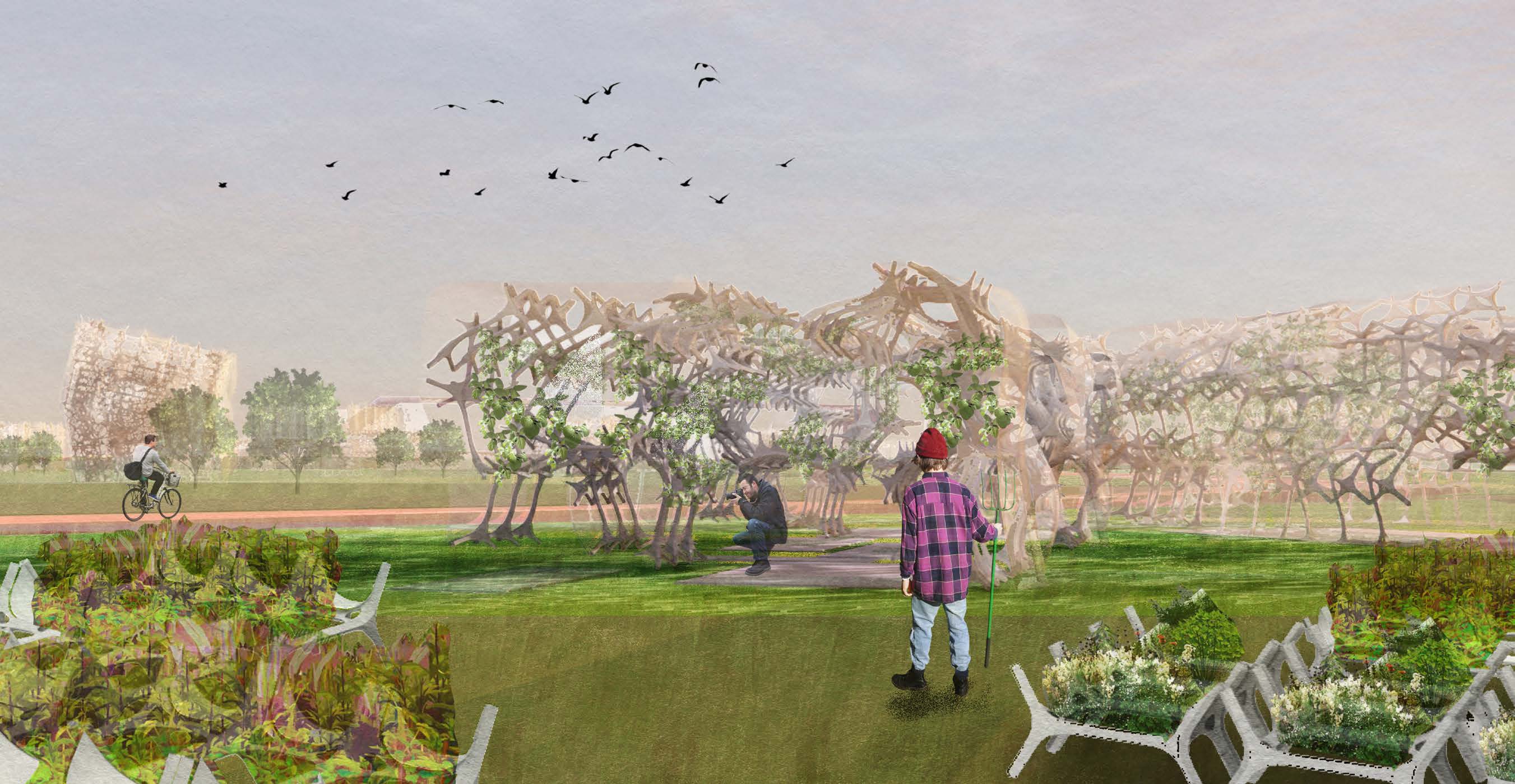
Date Summer 2022
Location Mannheim, Germany
Advisor Daekwon Park (D.Des)
Collaborators Angelina Zhang, Leo Luo
shortlisted for LAGI 2022
Situated near the city center of Mannheim, our site needs to serve as a gateway to the Rhein-Neckar Green Corridor. We envision the public park as a collection of three distinctive smaller parks: the Community Park, the Garden Park, and the Solar Park. These parks engage with the ecological landscape on the site’s southern edge and the residential and commercial neighborhood on the northern edge. The Community Park serves the local community’s needs, providing amenities to live active lives, spend time with family, and enjoy art. The Garden Park consists of productive gardens where the infrastructure for farming becomes the landscape design elements. The Solar Park acts as a civic outdoor space and a source of solar energy and water that fuels the community and beyond.
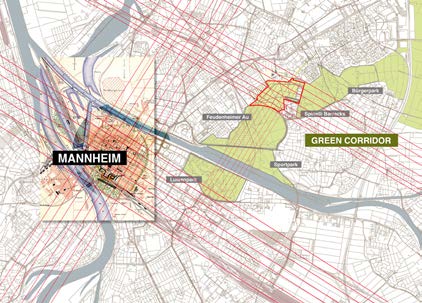

Beyond the Green Corridor
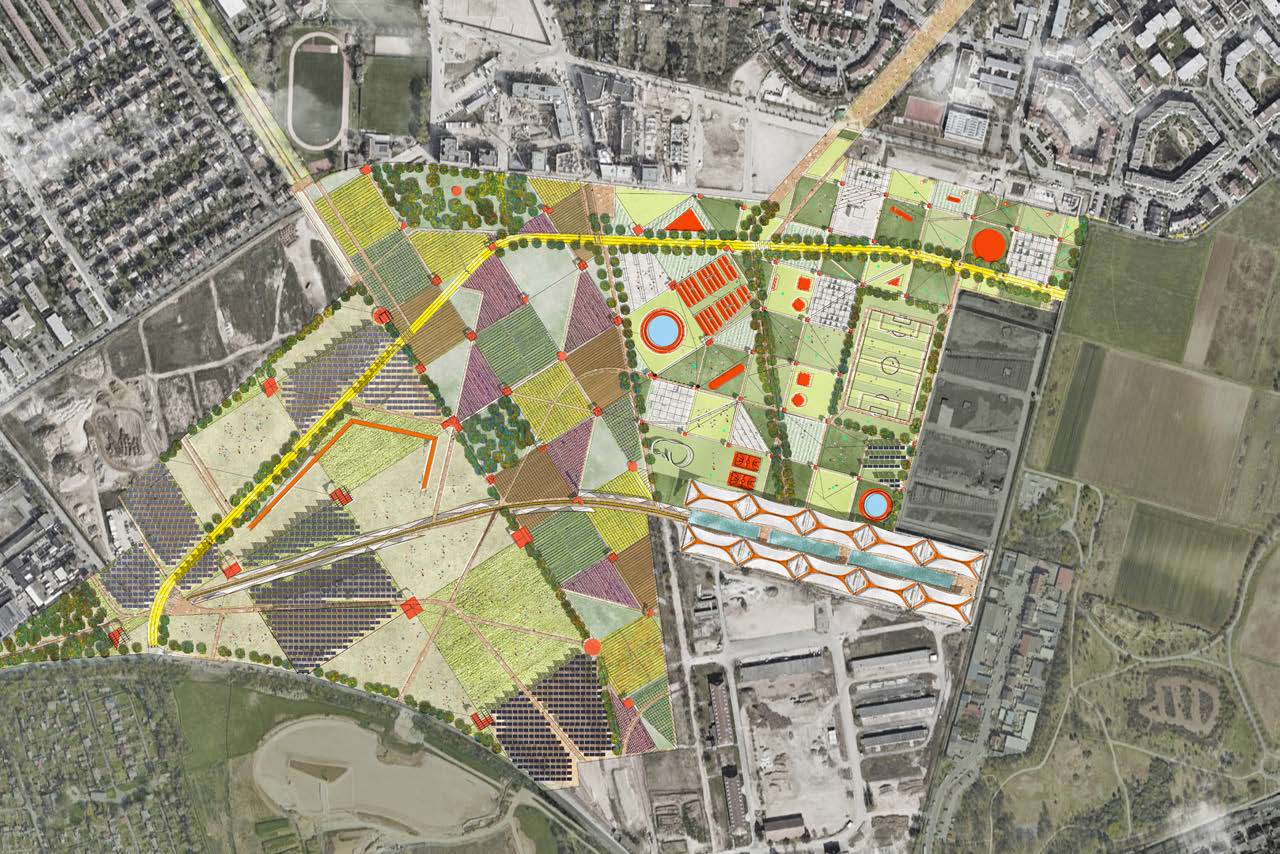
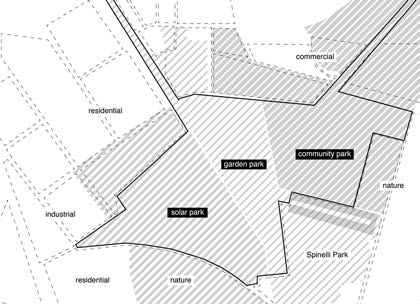
Land Use and Grid


Initial studies and development
The tetrahedron lattice modules can be assembled into various configurations, forms, and scales. As a modular design system, the application can range from furniture scale (bench, planter, streetlight) to architecture/ landscape scale (lookout, greenhouse, aeroponic tower, rest pavilion, playground, irrigation system, bridges). The structures are made of sustainable materials and are designed and manufactured using computational design and digital fabrication techniques.
Tetravoltaics implement thin-film organic photovoltaic (OPV) membranes. We chose this technology because it is possible to paint, print, or roll a thin layer of OPV on a substrate material. According to the reference, A Field Guide to Renewable Energy Technologies by R.Ferry and E. Monoian, the OPV’s peak power output is not as good as some other photovoltaic technologies; the flexibility and indirect sunlight performance can outweigh that limitation.
Furthermore, the proposed tetrahedron lattice structures are versatile and efficient. Due to its modular design logic, it is possible to create applications with various configurations and scales. The structures will be constructed using sustainable fabrication processes and materials (SDG 9. Industry Innovation and Infrastructure & SDG 12. Responsible Consumption and Production).
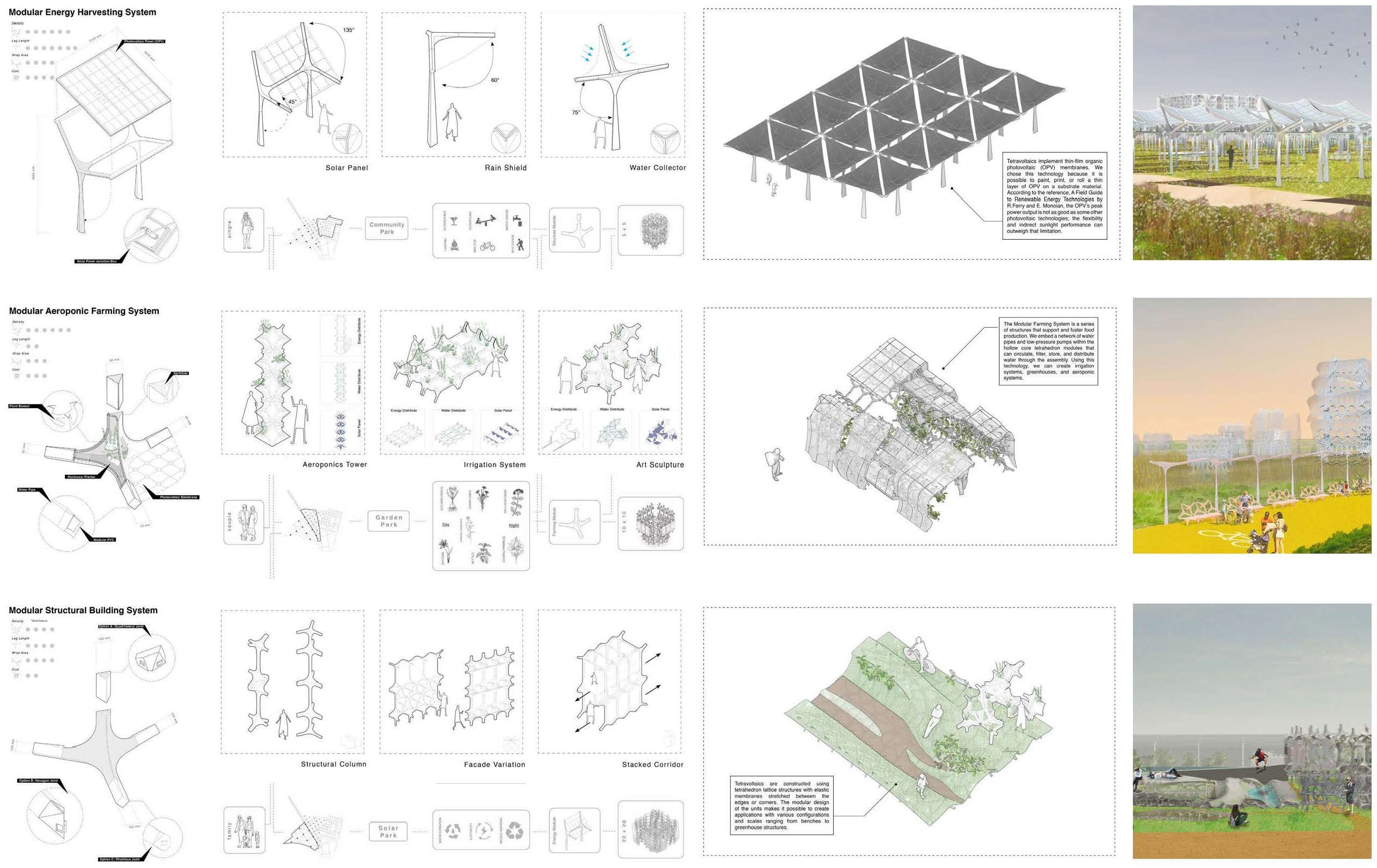
Tetravoltaics Modular System

We allocate a large park area to deploy a field of sail structures that harvest solar energy, collect rainwater, and provide shade to visitors.

The circulatory axis converge between the garden and solar parks. It lies on the tangential point of the old railway leading to the U-Hall, which is now a repurposed walkway/ skatepark. An elevated walkway provides a vantage point to survey the entire landscape. This forms a public square that serves as the social node on the Western edge of the site.


The Garden Park utilizes a productive landscape design that integrates food production with the public park. Vegetables, herbs, and flowers are grown using various methods, such as raised beds, greenhouses, and aeroponic towers.
© 2023 Tsz Man Nicholas Chung / all rights reserved

